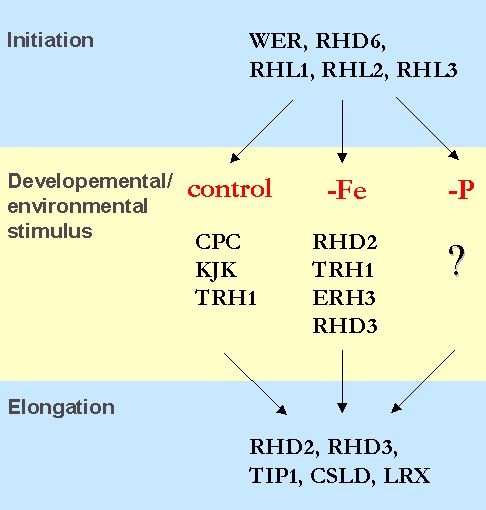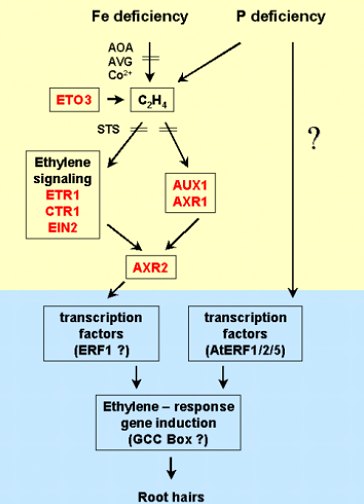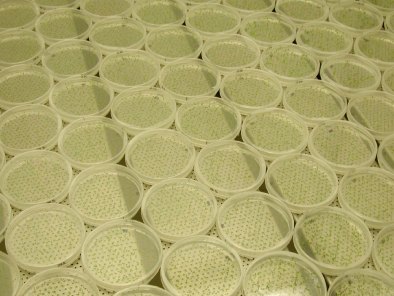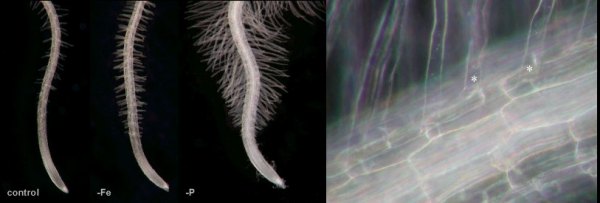|

The cellular organization
of root epidermal cells is controlled intrinsic developmental programs.
Genetic analysis implies that a set of cell speciation genes controls epidermal
cell fate. Analyzing the plasticity of root hair patterning in response
to environmental signals of mutants carrying lesions in various parts of
the root hair developmental pathway, by withholding phosphate or iron from
the nutrient medium, revealed that the divergence in root hair patterning
is most pronounced among mutants harboring defects in genes that affect
the first stages of differentiation, suggesting that nutritional signals
are perceived at or downstream of the stage of epidermal cell specification.
During elongation of the root hairs, no differences in the requirement
of gene products between the growth types were obvious. A model for the
genetic control of root hair development under control, -Fe, and –P conditions
in the aging primary root and laterals of Arabidopsis is shown above.

Acting at a relatively late
stage of cell differentiation, hormones are likely candidates to mediate
changes in epidermal patterning in response to environmental stimuli. An
involvement of auxin and ethylene in root epidermis cell development of
Fe- and P-deficient plants was inferred from phenotypical analysis of hormone-related
Arabidopsis mutants and from the application of substances that interfere
with either synthesis, transport or perception of the hormones. The data
suggest that, beside similar components, differences in the signaling pathways
exist between Fe- and P-deficient plants. The induction of root hairs in
response to P deficiency appears to be unaffected by mutations in the ethylene
signaling cascade or ethylene antagonists, thus representing an alternative
pathway for adapting epidermal cell patterning to the prevailing conditions.
A model summarizing putative hormone pathways for alterations in root epidermal
cell patterning induced by environmental stress is shown above.

Based on the data show above,
a genetic screen was developed to identify mutants that are not able to
produce root hairs under –P conditions, but display the wild-type phenotype
when grown in the presence of P. Seedlings of the mutant line PERFECT (phosphate
deficient root hair defective) form root hairs similar to the wild-type
in the first for to five days after germination, suggesting that in this
period the development is determined by intrinsic and positional information.
Thereafter, the developmental program becomes sensitive to environmental
cues, allowing for modulation of the stringent cell patterning of the primary
root. PERFECT seedlings are also defective in trichome formation, indicating
that the mutation has pleiotropic effects on plant development. Cloning
of the genes involved in the –P signaling pathway is in progress.

|




